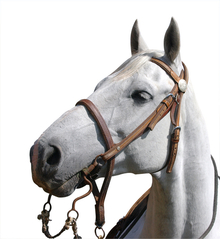Spring and summer often brings an increase of cases of nasopharyngeal cicatrix syndrome (NCS) which is a respiratory condition seen most often in horses living in south-central Texas and the panhandle area of Florida.

Respiratory conditions affecting horses
NCS in horses is characterized by coughing, nasal discharge, noisy breathing, exercise intolerance, flared nostrils, increased heart rate, and an extended head and neck.
Although symptoms are similar to laryngeal hemiplegia which may be caused by nerve damage related to traumatic injury, or other conditions and diseases, such as guttural pouch infections, strangles, tetanus, lead poisoning, and thrombophlebitis, NCS is usually not related to paralysis of the arytenoid cartilage and vocal fold.
First described 30 years ago, the disease is characterized by coughing, nasal discharge, noisy breathing, exercise intolerance, flared nostrils, increased heart rate, and an extended head and neck. Endoscopy reveals inflammation and scarring of structures in the horse’s throat.
These changes lead to narrowing of the airway and loud breathing. In severe cases, a tracheostomy may be necessary to allow air to flow freely.
Horses with NCS may be diagnosed as “roarers” because of their loud breathing. Others show coughing and nasal discharge in spring and summer, leading to a diagnosis of allergies. Endoscopic examination of these horses sometimes shows that they are experiencing the acute inflammatory stage of NCS, so medication for allergies won’t help them.
Horses that develop noisy breathing or other signs should be checked by a veterinarian so that NCS can be identified if it is the cause of the problems. If a tracheostomy is called for, the procedure should be done before the horse suddenly develops extreme trouble breathing.
Research has shown that nasal discharge is associated with acute inflammation of the pharynx and larynx, and resulting respiratory noise is associated with chronic scarring of the pharynx, a combination of pharyngeal and laryngeal scarring, and circumferential scarring of the pharynx.
Respiratory distress is associated with acute inflammation of all portions of the airway, especially when there was preexisting scarring and narrowing of the airway.
In one study, coughing did not have any significant association with NCS, compared with results in control horses.lesions.
Associations between the endoscopic appearance of NCS lesions and relevant clinical signs will help practitioners identify horses with NCS and allow them to select appropriate treatment.
